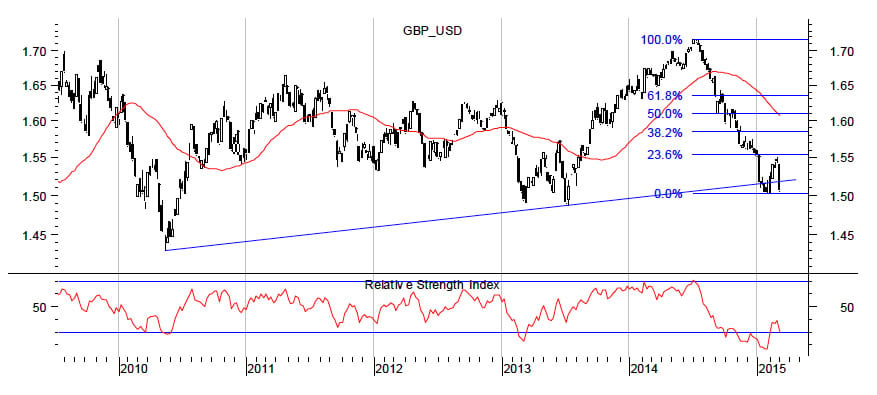Pound Sell-Off Gathers Pace but USD Strength Will Have Limits

The pound to dollar exchange rate (GBPUSD) has broken through the long-term support zone at 1.50.
"We don’t think the USD risks derailing the Fed’s tightening intentions but ongoing strength may affect the speed at which monetary policy is normalised going forward.” - Shaun Osborne, TD Securities.
The failure of this important support level means that the prospect of a quick run through to lower levels is now highly likely.
At the time of publication the pound dollar rate (GBPUSD) is trading 0.75 pct lower at 1.4944.
Significant dollar buying is the the current theme on currency markets with the euro suffering similar declines to its European cousin and now trading at 1.0586.
“The dollar flew at new multiyear highs as better jobs data kept a brighter spotlight on the Fed who mulls a policy decision next week,” says Joe Manimbo at Western Union.
Those looking to execute a global payment or money transfer should also be aware that the rate being offered by banks are far below the current market rate. By using an independent provider you could secure your FX requirements at better rates, up to 5% can be saved.
Outlook Sees 1.45 Ahead
“The USD’s push to its highest level since 2003 today extends the DXY’s climb to 23.5% over the past 12 months - a remarkable run for the USD overall and the most powerful, cumulative move in the big dollar since the 1980s,” says Shaun Osborne at TD Securities in Toronto.
As the below shows the lower level of the uptrend in sterling dollar, in place since 2010, is being tested. A failure here could invalidate the longer-term recovery.
The present pro-USD environment is unlikely to provide support to the GBPUSD rate but it does suggest the next target for the pair is 1.45 - the 2010 lows: 
The only hope for sterling at this stage is that the Fed eases back on its interest rate hike intensions as a strong currency can have a growth dampening effect - much like an interest rate hike would have.
If this is the case we would expect a strong bounce back in the likes of the euro and GBP. However, weakness can be expected until the UK's Bank of England signals it, like the Fed, is getting serious about raising interest rates.
We don't see this kind of communication happening until at least summer.
Osborne points out that the USD bull trend will likely extend in line with its longer-term secular trends - roughly eight years up and eight years down on average since the 1970s.
We look to be - quite literally - about half-way through the current bull phase.
Will Authorities Intervene Against the Dollar's Strength?
High profile comments from Fed and White House officials this week suggest USD strength is on policy makers’ radar.
Cleveland Fed President Mester and White House Council of Economic Advisors Furman made comments regarding unease over the Greenback's value.
However, “we don’t think the USD risks derailing the Fed’s tightening intentions but ongoing strength may affect the speed at which monetary policy is normalised going forward,” says Osborne.
USD strength only risks provoking a verbal protest from policy makers or impinging on Fed policy if the rise becomes disorderly.
Therefore, betting against the dollar on the basis that the Fed may be getting concerned over its value remains risky.
The Fed will in all liklihood pursue rate hikes in coming months, even if there is something of a delay.
“We are still very comfortable with a September start to hiking, and so while we disagree with the market trying to price in a June probability, even Janet Yellen will have a hard time doving up a message while the Fed drops “patience” from the script next week,” says Eric Green at TD Securities in New York.










